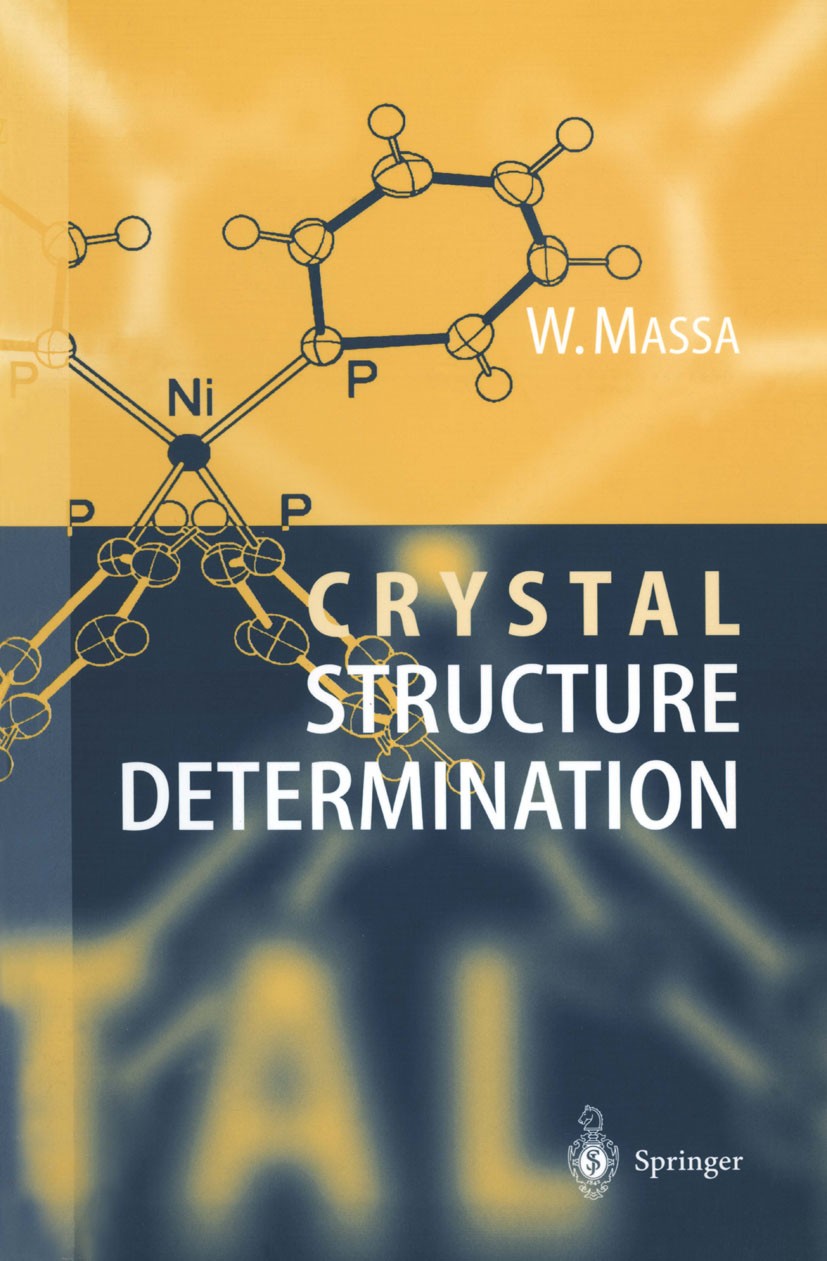| 书目名称 | Crystal Structure Determination | | 编辑 | Werner Massa | | 视频video | http://file.papertrans.cn/241/240642/240642.mp4 | | 概述 | Traditional and up-to-date approach;.Specific reference to the very widely used SHELX Programs of George Sheldrick, University of Göttingen;.Based on lectures held at the university for many years;.So | | 图书封面 |  | | 描述 | To solve a crystal structure means to determine the precise spatial arrangements of all of the atoms in a chemical compound in the crystalline state. This knowledge gives a chemist access to a large range of information, induding connectivity, conformation, and accurate bond lengths and angles. In addition, it implies the stoichiometry, the density, the symmetry and the three dimensional packing of the atoms in the solid. Since interatomic distances are in the region of 100-300 pm or 1-3 A, I microscopy using visible light ( wavelength Je ca. 300-700 nm) is not applicable (Fig. l. l). In 1912, Max von Laue showed that crystals are based on a three dimensional lattice which scatters radiation with a wavelength in the vicinity of interatomic distances, i. e. X -rays with Je = 50-300 pm. The process by wh ich this radiation, without changing its wave length, is converted through interference by the lattice to a vast number of observable "reflections" with characteristic directions in space is called X-ray diffraction. The method by which the directions and the intensities of these reflections are measured, and the ordering of the atoms in the crystal deduced from them, is called X -r | | 出版日期 | Textbook 20001st edition | | 关键词 | Kristall; Kristallographie; Pulverdiagramm; Röntgenanalyse; Röntgendiffraktion; Strukturbestimmung; X-ray | | 版次 | 1 | | doi | https://doi.org/10.1007/978-3-662-04248-9 | | isbn_ebook | 978-3-662-04248-9 | | copyright | Springer-Verlag Berlin Heidelberg 2000 |
The information of publication is updating

|
|
 |Archiver|手机版|小黑屋|
派博传思国际
( 京公网安备110108008328)
GMT+8, 2025-11-12 20:28
|Archiver|手机版|小黑屋|
派博传思国际
( 京公网安备110108008328)
GMT+8, 2025-11-12 20:28


